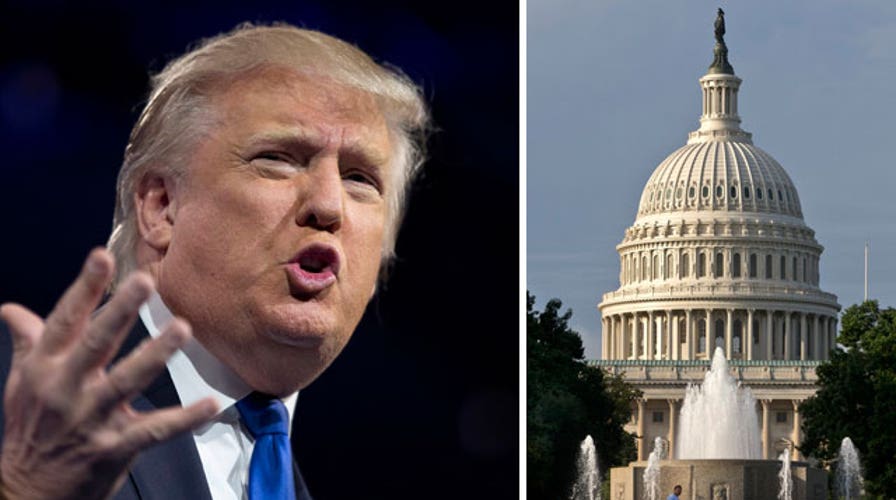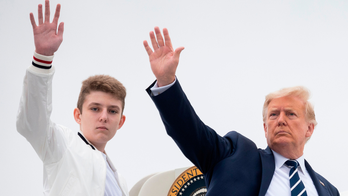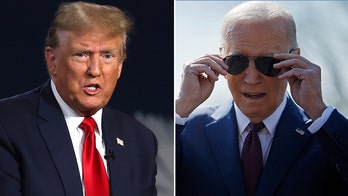Before he gets to any of his campaign promises – building a border wall with Mexico, killing ObamaCare, reversing President Obama’s executive orders – Donald Trump will first face the daunting debt ceiling.
On Capitol Hill over the past few years, we’ve been through a government shutdown. Threats and precipices of government shutdowns. The payroll tax debacle. A partial shutdown of the FAA. The fiscal cliff. There have even been minor iterations of the so-called “dairy cliff” and the more obscure “whisky cliff.”
But all of these crises are pedestrian compared to the behemoth dilemma of them all: the debt ceiling.
Republicans in Congress and Obama waged an epic battle in the summer of 2011 over hiking the debt limit. That’s the statuary threshold dictating how much money the government can borrow at any one time. The debt ceiling is currently $20.1 trillion. Congress voted last fall to “suspend” the debt ceiling until March of 2017.
Votes to raise the debt ceiling are the most-onerous ones a member of Congress can cast. No one wants to vote to “raise” the debt ceiling because it looks fiscally irresponsible. Yet failing to vote to raise the debt ceiling could send a shock through the bond market and roil global financial markets. Such a phenomenon unfolded in August, 2011 even though Congress managed to hike the debt ceiling.
So, the new Congress and President-elect Trump get to wrestle with this conflagration right out of the bat. House Speaker Paul Ryan doesn’t like raising the debt ceiling. Nor do most Republicans. So either they hit the debt ceiling or a handful of GOPers and lots of Democrats vote to raise the threshold. And then it’s up to Trump to sign the bill.
That would infuriate his supporters. But there is a potential out here.
Lawmakers and Trump could simply punt by “suspending” the debt ceiling.
Or, such a scenario introduces opportunity to actually address spending and rework the tax code. Ryan will like that if they can get it. President Obama and then-House Speaker John Boehner came very close to engineering a “Grand Bargain” to cut spending in the summer of 2011…before then it fell apart.
Either way, the debt ceiling debacle will likely serve as Trump’s first big battle and also could present a big opportunity for Trump and Republicans in Congress to address major fiscal issues.
Another top priority is the prospective repeal of ObamaCare.
The House voted umpteen times over the past few years to repeal it but because of a Senate Democratic majority, the GOP could never force a Senate vote. And, President Obama would not sign such a bill to repeal.
But that changed when Republicans won the Senate in 2014.
Senate rules allow for a once-year-option called “Budget Reconciliation.”
The budget reconciliation process blocks filibusters and sidesteps the necessary 60 vote threshold which senators can use to block many things. Instead, the Senate needs a simple majority to advance bills.
Trump has signaled he would sign a repeal bill. Democrats would certainly try to filibuster a conventional ObamaCare repeal bill under standard Senate rules but not under budget reconciliation.
But here’s the rub for repealing ObamaCare: there must be a replacement bill ready to go with the votes to pass. Congressional Republicans have never advanced a replacement bill because they never had one which could pass. If they repeal ObamaCare with no replacement ready to go, chaos ensues.
Another priority is the Supreme Court.
It is entirely possible that Senate Democrats, who are still in the minority, could filibuster any Trump nominee for the high court. That sets a precedent. Keep in mind that Senate Republicans have not filibustered the nomination of Merrick Garland for the Supreme Court. They simply have not considered his nomination.
The Senate has never filibustered a Supreme Court nomination which made it to the floor. However, the Senate did filibuster President Lyndon Johnson’s nomination to elevate Supreme Court Justice Abe Fortas to become Chief Justice of the United States. Fortas never made it over the 60 vote cloture bar to end debate. But Fortas remained on the Court..as he was already a Justice.
If Democrats do block a Trump SCOTUS nominee, Republicans may also feel that what's good for the goose is good for the gander.
In November, 2013, Senate Democrats took the extraordinary step of unilaterally lowering the "cloture" bar for filibusters of most executive branch nominees from 60 to a simple majority. However, they kept the 60 vote threshold to finish debate on Supreme Court nominees. Confirmation would still entail a simple majority.
Republicans could very well engineer their own version of the so-called "nuclear option" and lower the bar to wrap up debate on Supreme Court nominees from 60 to just 51.





